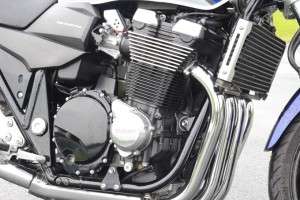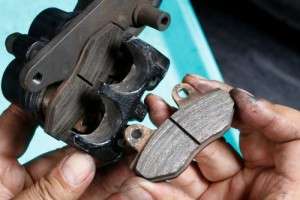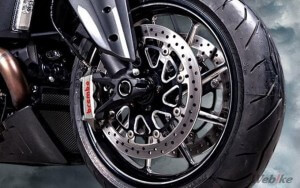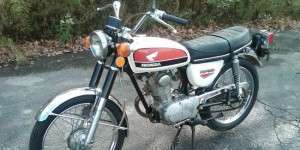[Kenny Sagawa’s Column] Blast while riding! How do you manage this situation?
- 03/10/2016
47 views
![20161003 Sagawa - [Kenny Sagawa’s Column] Blast while riding! How do you manage this situation?](https://gc-img.webike.net/@wid-news/wp-content/uploads/2016/10/20161003_Sagawa.jpg)
[Kenny Sagawa, Webike News Chief Editor]
It may be linked to El Nino that many typhoons are abnormally coming to Japan this year. As summer is nearing to its end, we have had many rainy days lately. Such days make riders feel blue.
Speaking of a typhoon, it brings a strong wind. The wind sometimes becomes a stormy wind and hits riders. To avoid it, not riding a motorcycle during a typhoon is the best way. But, what should we do when we unluckily encounter a typhoon? Let’s think about what to do when we meet a strong wind while riding.
Criteria for traffic regulations depend on situations
There may be not a few who have a scary experience to be hit by a side wind while riding on an express highway. A serious typhoon forces road closure. Even if it is not as strong a wind as a typhoon, a motorcycle rider tends to become unstable by such a strong wind.
Traffic regulations due to a strong wind such as a typhoon are mainly determined by both “a rainfall amount” and “a wind speed.” Its criteria seem to depend on geographical conditions of an express highway or a judgement by the road managers.
For example, the criteria are likely to be stricter on a bridge over a wide river or on a sea-side district that is easily affected by a strong wind.
In case of “Tokyo Bay Aqua-Line,” which is famous for its big wind, it seems that the wind speed of over 20m/s closes the road and the wind speed of 15m/s regulates a maximum speed.
For your reference, according to the Japan Meteorological Agency (JMA), an area with a wind speed of over 15m/s is called “a strong wind area” and with a wind speed of over 25m/s is called “a storm area.”
Impossible to run straight in a wind speed of over 15m/s
In order to know how strong the wind speed is, I would like to refer Classification of the strength of a typhoon and Affects on humans on JMA’s web site. It says: a wind speed of over 15m/s is equivalent to “it is impossible to walk against the wind and some people fall down” and “a feeling to be swept away from a side wind becomes stronger.”
When it comes to over 20m/s, it becomes “it is impossible to stand without holding on to something” or “it is difficult to drive at a normal speed.” A wind speed of over 25m/s reaches a level “a truck that is running is blown down.”
Therefore, it looks clever to stay indoors when a typhoon is entering “a strong wind area.”
You should be careful about the center of a typhoon, so called “an eye of a typhoon.” The wind suddenly subsides and sometimes blue sky appears. But once the eye passed over, a strong wind returns in opposite direction.
The JMA says “a typhoon is largely affected by geographical conditions of the land. A wind tends to blow strongly at a cove, straits, a cape, a valley, a mountain ridge, and such. A cluster of tall buildings causes strong winds or turbulence. A wind locally becomes stronger, e.g. you need to struggle against strong winds at a tunnel exit or on a bridge.”
Even if a wind briefly subsides, you should be attentive.
Writer’s experience: windblast during ride!
Let’s move to how we can manage a blast when the wind suddenly blows while riding on a motorcycle.
I often use Tokyo Bay Aqua-Line. I have experienced several strong side winds on the road between Umihotaru and Kisarazu, which is over the sea.
As soon as I came out of the calm undersea tunnel, a gusty wind blew from the left and pushed me to the passing lane.
It was as though somebody threw a mass of air at me, I could not stand against the force. The motorcycle that I was riding was a tourer of 1200cc class. Because of the large windshield and pannier case, the vehicle may have been strongly affected by the side wind.
“I felt rushed at a moment, but I regrouped at the next moment and found out that I was able to keep a balance with leaning the motorcycle slightly windward. If a high-speed car followed in the passing lane, my life might have gotten into danger.
Thinking back on the incident, I remember that a truck before me largely snaked its way. It seemed that fairly strong winds were blowing.”
“Slow down speed and expose the vehicle to the winds” in sudden blast
After several similar experiences, I have learnt “an effective skill” to take counter steering against side winds. This means that you steer rightward a little if the side winds blow from the left. This enables the vehicle to lean leftward and become easily balanced.
「In riders’ words, it is like pushing the left handle grip forward or like exposing the machine to the winds.
If you feel that “a side wind will come” around an exit of a tunnel in the mountains, you should get prepared for tight hold of the vehicle with gripping the machine with your knees, while you are slightly bending down, posing low, relaxing yourself, and lithely letting the wind pass. It is important to grip a handle tightly for a sudden wind blast.
When a side wind hits you after that, it is likely effective in many cases to use counter steering or, in an opposite manner, to loosen the hold and lean the motorcycle windward with a sense that you let the machine play inside the legs in accordance with its strength and directions.
Regarding speed, it is better to run at a low speed since “speed regulations by strong winds” exist. Speed control in an early stage is recommended considering the distance to the following vehicle.
As concerns a gear choice, one step lower gear allows easy transmission of torque and increases a feeling of contact with the ground. Then, you could feel a sense of security.
Never take a risk!
You will get skills against strong winds through various experiences, but there may be still some situations beyond your imagination. Especially in case of motorcycles, which are more unstable than cars, I can say that it is the best way never to take a risk.
When you want to know about road closure information, using websites such as Japan Road Traffic Information Center (JARTIC) is useful. Such sites provide real-time traffic information including traffic regulations caused by natural disasters like typhoons and earthquakes.
>> Japan Road Traffic information Center (JARTIC) (*Japanese)



![20160921_sagawa_01 20160921 sagawa 01 - [Kenny Sagawa’s Column] Blast while riding! How do you manage this situation?](https://news.webike.net/wp-content/uploads/2016/09/20160921_sagawa_01.jpg)























